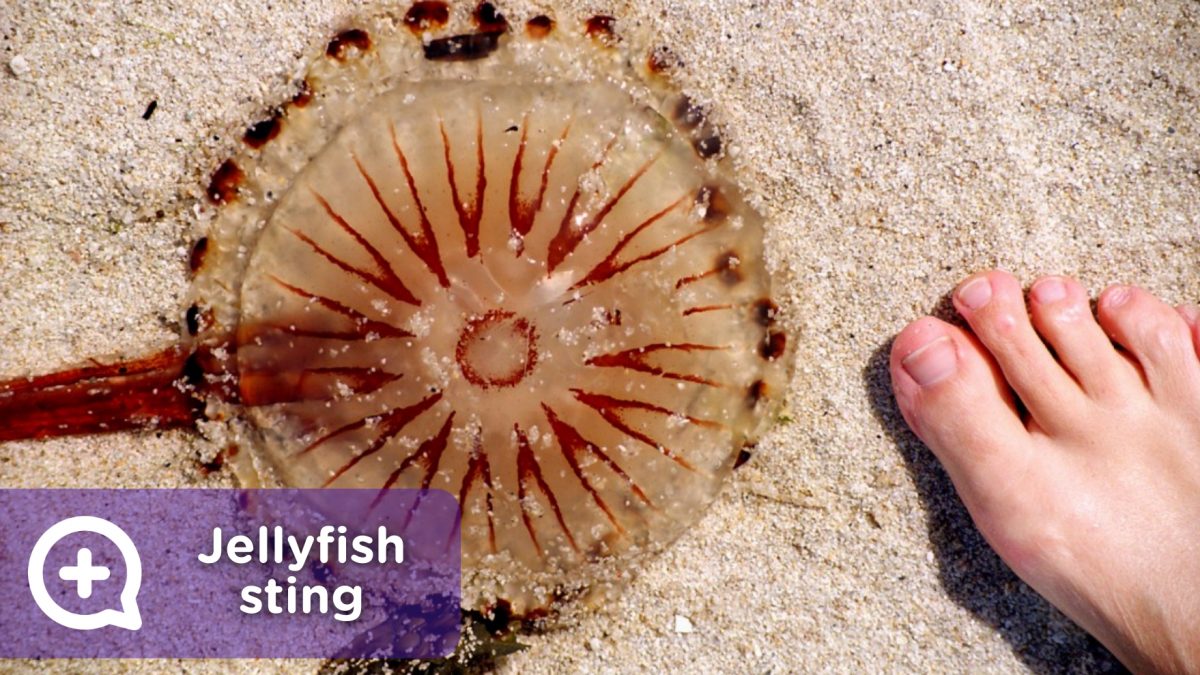We call it a jellyfish sting, but in reality they are not stings: it is the “skin” of the jellyfish itself. The skin has small darts that are capable of injecting the stinging substance that causes the wound. That’s why you must be careful! Simple rubbing is already harmful and a jellyfish can sting you when they are dead.
What can happen if a jellyfish stings you?
Jellyfish stings are very painful and they will most likely bother you during the holidays, but they will not kill you. In rare cases it can cause nausea, vomiting, and cramps, but the most common is intense pain (similar to a burn) and skin lesion, which can range from simple redness to lacerations and the appearance of small pustules. The discomfort disappears after a few days, but the marks are visible for days.
If there are an abundant amount of bites and they cover a significant part of the skin (for example, if we have the bad luck of falling in the middle of a jellyfish bank), or if the jellyfish is a Portuguese Caravel, the pain can be so intense that it causes paralysis and even momentary loss of consciousness. The risk here is drowning if the paralysis occurs in the water.
People most vulnerable to jellyfish stings
Children and the elderly can suffer more intense pain from jellyfish stings. One the one hand, it is because they have finer skin and the poison can penetrate more easily. In addition, in the case of children, it is because their body is smaller in relation to the size of the bite, making it more dangerous. Meanwhile, the elderly have decreased natural defenses to this type of injury due to age.
Asthmatics, those with allergies or those with circulatory or heart problems can also suffer from worse consequences, so they should exercise extreme caution when going to the beach.
What do I do when I have been bitten by a jellyfish?
First of all, do not lose your cool. The pain is intense and it can seem very serious, but it is usually not the case. Secondly, one should avoid grandmother’s remedies, such as urinating on the wound, which can do more harm than good.
Follow these steps in the case of a jellyfish sting:
- Get out of the water or take the person out of it.
- Examine the wound and look for the tentacles of the jellyfish. If there are some, remove them with tweezers or with hands protected by gloves.
- Wash the wound with cold saline solution (ideally) or with seawater, which is usually what is most at hand. You should never use fresh or hot water.
- Apply cold using an ice pack or cold gel bag.
- When the pain has subsided, clean it with iodine to disinfect it.
You can determine if it is necessary to apply a cortisone cream from the pharmacy for a few days.
If the symptoms are more severe or if the pain persists, it is recommended to seek medical help.
*Content validated by the mediQuo medical team.



